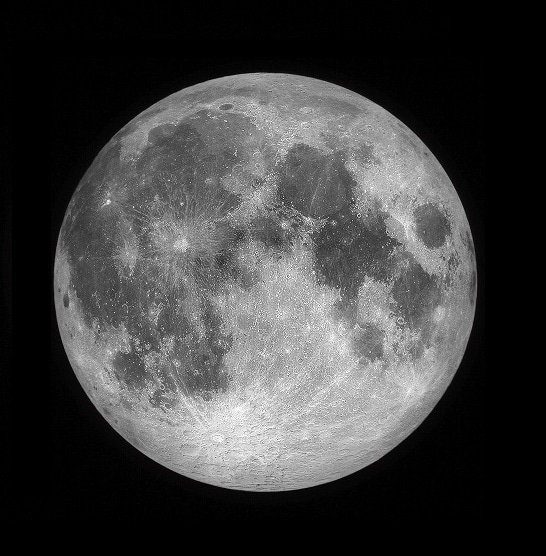Jun 9 2014
The pursuit of clean energy to preserve the environment has become a necessity now. Non-renewable energy sources on the Earth are depleting at an alarming rate, causing scientists to look alternative viable options - the Moon for a source of renewable energy.

Sourced from: Think Stock
Sourcing the Moon’s energy is however not a new concept. The Moon’s energy has been a power source for several decades, wherein its gravitational pull has been harnessed to spin generators. Similarly, tidal power plants have been arranged like hydroelectric dams to trap water during high tide and then during low tide, release it through turbines.
Mining on the Moon is a still a fairly unrealistic option but several research projects are underway to test its potential.
Renewable Energy on the Moon
Resources on the Moon are abundant. Platinum, silicon, iron, titanium, ammonia, mercury, and even water have been proven to exist on the Moon. However, the one resource that is very rare on Earth but abundant on the Moon is helium-3.
Helium-3 ions were discovered in the Moon's upper crust after the Apollo 17 lunar mission brought back soil samples from the Moon. Helium-3 is a non-radioactive hydrogen isotope with one neutron and two protons. Scientists hypothesise that He-3 was carried through space via the Sun’s solar winds but burns up as it reaches the Earth’s atmosphere, thereby making it almost non-existent on Earth. However, helium-3 has accumulated on the Moon’s surface in plenty. Scientists estimate that the Moon is likely to contain roughly 1 million tons of He-3, which translates to a hypothetical 10,000 years worth of energy.
The reason why helium-3 is highly sought after is due to its unique properties. It can fuel non-radioactive nuclear fusion reactions to produce safe, clean, and large quantities of energy, thereby transforming the future of energy generation on Earth. Fusion reactions are much more efficient than fission reactions that are currently used in nuclear plants. He-3 allows energy to be generated with very limited amount of waste as well.
Experts reveal that a commercial basis He-3 would be worth about $40,000 per ounce. When 1 ton of He-3 is burnt along with 0.67 ton of deuterium, about 1,000 MW of energy can be produced. To further reiterate the fact, about 100 tons of He-3 has the potential to power the entire population of Earth for a year!
Mining on the Moon
Many people will ask questions such as: "Is it a realistic concept?" and "Who would want to undertake such a risky venture?". Already, global powers and emerging market economies have begun voicing their interest to enter the space race with clear plans to travel to the Moon. India, China, Russia, and the USA are a few of the countries pushing for exploration of outer space and the Moon.
Russian space company, RSC Energia has already revealed a proposal to open a permanent lunar base by 2025 to enable helium-3 mining operations. Shackleton Energy Co., a subsidiary of Stone Aerospace, is also ready to make a profit out of space travels by planning on developing orbital rocket fueling stations by 2020 in order to provide fuel to spaceships on their voyage to the Moon and back. It is essential to develop an infrastructure to support such activities on the lunar surface.
The soil on the Moon is different from that on Earth. Lack of moisture and stronger adhesion on the Moon surface causes a hard vacuum resulting in chip formation and clogging during drilling. A combination of mining methods such as using gaseous lubricants, blasting techniques, and electrothermal (lasers) techniques, would be an ideal approach to lunar soil mining.
The Outer Space Treaty of 1967 states that Moon mining does not violate any international agreements. However, countries began to debate over who will eventually own the rights to the materials mined. This brought about the 1979 Moon Treaty, which is an agreement governing the activities of states on the moon and other celestial bodies. This treaty was developed by the United Nations in order to control exploitation, and exploration of the moon. The treaty also ensures that any wealth obtained from the Moon has to be distributed to all the nations of the world. However, the Treaty has not been accepted by all the members of the UN.
Downside to Mining on the Moon
Certainly, all these moon ventures and mining concepts will be very expensive and will require billions of dollars of investment. The extraction and refining of helium-3 will also require new technologies, and thus more costs.
More research will have to be carried out in order to ensure that mining on the Moon’s surface is safe and to investigate what the possible environmental impacts might be, as the Moon’s orbit has an effect on several occurrences on Earth such as sea tides, plate tectonics, weather patterns, plant growth, and animal mating habits. The celestial balance might be affected when several tons of He-3 are removed from the Moon's surface and brought to Earth. The related mining activities will require the use of powerful machinery and explosives, which might cause giant lunar meteorites falling to the Earth.
Thus, it would be mandatory to have proper regulations in place before any activity on the Moon begins.
Summary
While a lot more research and feasibility studies will be needed to assess the possibility of tapping the Moon’s energy, politics and power to monopolize the wealth on the moon might slow down any chance of mining there. However, whether mutual cooperation for the betterment of mankind wins is something we will have to wait and see in the years to come.
Sources